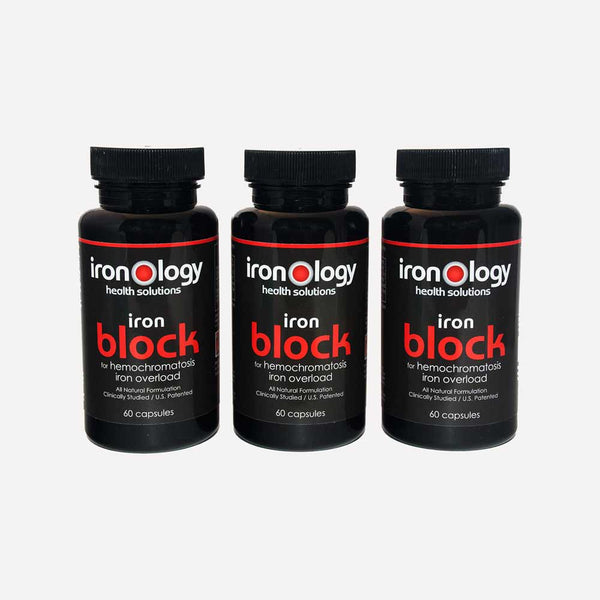Iron Overload
About Iron Overload
Iron overload is an excess (too much) iron in the body. Excess iron in vital organs, even in mild cases of iron overload, increases the risk for liver disease (cirrhosis, cancer), heart attack or heart failure, diabetes mellitus, osteoarthritis, osteoporosis, metabolic syndrome, hypothyroidism, hypogonadism, numerous symptoms and in some cases premature death. Iron mismanagement resulting in overload can accelerate such neurodegenerative diseases as Alzheimer’s, early-onset Parkinson’s, Huntington’s, epilepsy and multiple sclerosis.
Iron overload can be inherited (genetic) or acquired by receiving numerous blood transfusions, getting iron shots or injections, or consuming high levels of supplemental iron. Some of the genetic disorders that result in iron overload include hereditary hemochromatosis (all types), African iron overload, sickle cell disease, thalassemia, X-linked sideroblastic anemia, enzyme deficiencies (pyruvate kinase; glucose-6-phosphate dehydrogenase) and very rare protein transport disorders aceruloplasminemia and atransferrinemia.
About Hemochromatosis
Hemochromatosis (HH) is a disease that results from excessive amounts of iron in the body (iron overload).
Hereditary (genetic) hemochromatosis (HHC) is an inherited disorder of abnormal iron metabolism. Individuals with hereditary hemochromatosis absorb too much dietary iron. Once absorbed, the body does not have an efficient way of excreting iron excesses. Over time, these excesses build to a condition of iron overload, which is dangerous and toxic to cells. Glands and organs, including the liver, heart, pituitary, thyroid, pancreas, synovium (joints) and bone marrow burdened with excess iron cannot function properly. Symptoms develop and disease progresses.
There are several types of genetic hemochromatosis. These include: Type I or Classic (HHC); Type II a, b or Juvenile (JHC); Type III or Transferrin Receptor Mutation; and Type IV or Ferroportin Mutation.
18 Red Flags of Iron Overload
- Elevated ferritin and iron
- Chronic fatigue
- Joint pain
- Abdominal pain
- Skin color changes - such as ashen gray/green, bronze
- Loss of outer eyebrows
- Irregular heartbeat
- Diabetes
- Elevated liver enzymes
- Cirrhosis of the liver
- Weight changes
- Hypothyroidism
- Infertility - miscarriage or sterility
- Impotence
- Hypogonadism
- Depression
- Mood swings, outbursts
- Family history of early death due to heart failure
Treatment of Hemochromatosis/Iron Overload
Ironology Iron Block impairs the absorption of iron, but that is not the same as removing iron. Therapeutic blood removal may also be necessary to treat iron overload.
How is Hemochromatosis/Iron Overload Diagnosed?
A hemoglobin (finger stick) test is not enough to diagnose iron overload. Obtain an Ironology Iron Panel to get the full picture and all of the tests required for your health care practitioner to make a proper diagnosis.



